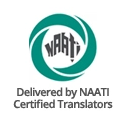
Tajiki has over 17 million speakers globally and a fascinating history intertwined with the rise and fall of empires. Tajiki’s roots trace back to the Eastern Iranian branch of the Indo-European family tree. This linguistic lineage connects it to languages like Persian and Pashto, and its ancestry can be traced all the way back to Old Persian, the tongue used during the mighty Achaemenid Empire (550–330 BCE). Over centuries, Tajiki evolved from a dialect of Dari Persian spoken in eastern Iran. As Tajikistan carved its own cultural path, Tajiki gradually developed distinct characteristics, becoming the vibrant language it is today.
Evolution of Tajiki’s Identity
For centuries, speakers in Central Asia and Afghanistan considered their language simply another dialect of Farsi, the umbrella term for Persian. The word “Tajik,” meaning “crowned” or “imperial” in Persian, wasn’t used to identify the language itself. Up until the 20th century, the dominant power, Russia, referred to it as “Tadzhik.”
The 20th century witnessed a significant shift. With the rise of Tajik nationalism, the language gained official recognition in 1989. However, the relationship with Farsi remained complex. Initially, the law declared Tajiki to be essentially the same as Farsi, even placing the term “Farsi” after “Tajiki” in official documents. This move reflected a desire to reconnect with the language’s Persian roots. Additionally, efforts were made to reintroduce the Perso-Arabic script, a symbol of this shared heritage.
However, by 1999, the term “Farsi” was removed from the state language law, marking a definitive step towards establishing Tajiki as a distinct language with its own unique identity.
Geographic Spread
Tajikistan is the heartland of Tajiki, where it is the official language. However, the language echoes beyond borders. Significant Tajik-speaking communities exist in Uzbekistan, Afghanistan, Kyrgyzstan, and even pockets of Russia. This spread reflects historical migrations and cultural exchanges.
Dialects and Nuances
Southwestern Tajiki, spoken in the capital Dushanbe, is considered the standard dialect. Eastern Tajiki, spoken in the mountainous regions bordering Afghanistan, might retain some vocabulary closer to its Persian roots. These dialects differ slightly in pronunciation, vocabulary, and grammar, showcasing the dynamism of a living language.
Building Vocabulary
Tajik’s vocabulary features a fascinating mix of influences. It preserves words like “arziz” (tin) and “farbeh” (fat) that have long since fallen out of use in Iran and Afghanistan. Modern times have ushered in a wave of Russian loanwords, particularly in areas like government, technology, and economics, reflecting Tajikistan’s Soviet past.
Uzbek, a neighboring language, and Arabic, common in Islamic countries, have also contributed their share of vocabulary. Interestingly, since the 1980s, efforts have been afoot to revive old Tajik terms or create entirely new ones for modern concepts, such as “garmkunak” (heater) and “čangkašak” (vacuum cleaner).
Nouns and Grammar
Tajiki nouns have grammatical gender (masculine, feminine, and neuter) and two numbers (singular and plural). Nouns also decline in four cases (nominative, accusative, dative, and genitive) depending on their role in the sentence. This system can appear complex at first glance, but it contributes to the language’s rich structure and expressive power. For instance, the case system allows for flexibility in sentence construction, enabling emphasis on specific elements within a sentence.
At TranslateSwift, we understand the importance of preserving languages and cultures. Our team of expert linguists, well-versed in Tajiki’s nuances, can assist you with any translation needs. We offer high-quality translations for all types of documents, ensuring accuracy, reliability, and cultural sensitivity.
Other Languages
- English
- Spanish
- German
- Dutch
- French
- Italian
- Afrikaans
- Albanian
- Amharic
- Arabic
- Armenian
- Azerbaijani
- Basque
- Belarusian
- Bengali
- Bosnian
- Bulgarian
- Cantonese
- Catalan
- Cebuano
- Chichewa
- Chinese - Simplified
- Chinese - Cantonese
- Chinese - Traditional
- Chinese - Mandarin
- Corsican
- Croatian
- Creole
- Czech
- Danish
- Dari
- Esperanto
- Estonian
- Farsi
- Filipino
- Finnish
- Frisian
- Galician
- Georgian
- Greek
- Gujarati
- Haitian Creole
- Hausa
- Hawaiian
- Hebrew
- Hindi
- Hmong
- Hungarian
- Icelandic
- Igbo
- Indonesian
- Irish
- Japanese
- Javanese
- Kannada
- Kazakh
- Khmer
- Korean
- Kurdish
- Kyrgyz
- Lao
- Latin
- Latvian
- Lithuanian
- Luxembourgish
- Macedonian
- Malagasy
- Malay
- Malayalam
- Maltese
- Maori
- Marathi
- Mongolian
- Montenegrin
- Myanmar
- Nepali
- Norwegian
- Odia
- Pashto
- Persian
- Polish
- Portuguese
- Punjabi
- Romanian
- Russian
- Samoan
- Scots Gaelic
- Serbian
- Sesotho
- Shona
- Sindhi
- Sinhala
- Slovak
- Slovenian
- Somali
- Sundanese
- Swahili
- Swedish
- Tajik
- Tagalog
- Tamil
- Telugu
- Thai
- Turkish
- Ukrainian
- Urdu
- Uyghur
- Uzbek
- Vietnamese
- Welsh
- Xhosa
- Yiddish
- Yoruba
- Zulu
